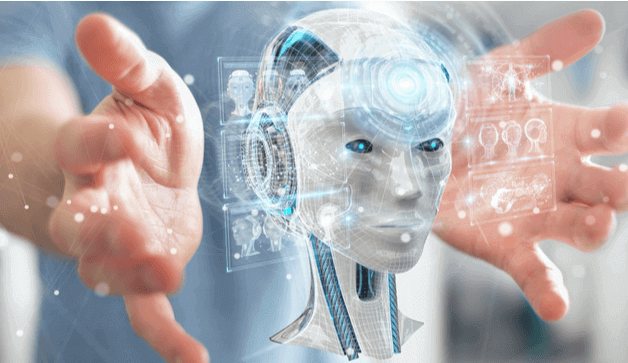Genesis
In the modern age, the “Artificial Intelligence (AI) Economy” is revolutionizing the economy today. Perhaps AI is best used when it replaces human intelligence. Furthermore, nowhere is it more relevant than in the area of Business Process Outsourcing (BPO) that thrives on data and analytics operations.
The original model was based on “labor arbitrage,” which used the world’s cheapest knowledge workers to run data and analysis workflows. Over the next decade, it was refined with the development of “process arbitrage,” which streamline processes, create robotic process automation (RPA), and employ disciplined data governance frameworks for greater efficiency. Today, through the skillful use of cognitive science, the pragmatic possibilities of removing people from the business process chain are endless and ushering in the era of “decision arbitrage”. AI can be used in a variety of ways, such as harmonizing self-correcting data, optimizing processes through bionic humans, eliminating processes through autonomous decision-making and human displacement with cognitive applications, and much more.
Cost-inversion
While traditional governance and process automation models promise a 7 to 8 percent improvement in service level agreements (SLAs), a cognitive data operation has the potential to save 60 to 70 percent in human costs, which in turn can be used to develop disruptive models and generate unprecedented competitiveness. Thus, people with AI can potentially overlay operational decision-making on cognitive machines while they focus on developing new business models and entering new markets.
Re-Imagining Business Operations with Applied AI
While there are many data-centric or analytics-driven business processes that can be restructured using AI, here are a few examples that are applicable with recent advances in technology.
Smarter Data Governance
Enabling thinking machines to make decisions on behalf of people and thereby removing the roles of decision-makers such as administrators from the data governance process could significantly improve the ROA (return on asset) of data. Freeing up that capital improves the quality of revenue for any business, without losing the value of your most important asset: data.
A harness equipped with artificial intelligence capabilities can apply cognitive science to tasks such as automated data set corrections, detection and execution of data quality rules from data patterns, detection and correction of outliers, better data recommendations, automatic data cataloging detection, lineage detection, and a host of other human tasks that are delegated to robots be able.
The Cloud-Data Angle
By 2025, 49% of the data stored worldwide will be stored in public cloud environments (IDC DataAge, 2025). As industries mature to take advantage of the connected infrastructure ecosystem with cloud-native designs and platforms, the business that can leverage the power of this connected and collaborative data ecosystem will have a clear competitive advantage.
The use of basic artificial intelligence design patterns, solutions related to data protection, data obfuscation, reputation management, removal of the wisdom of malicious masses, validation and confirmation of signal sources, data origins, data loss and data leakage prevention, and much more, would become the mainstay of companies that disrupt the status quo.
The Business of Trade-Finance
The cost of trade finance is prohibitive, which means that three major players, HSBC, Citi and Standard Chartered Bank, dominate the market. The high costs are due to the manual processing of paper documents and the review of individual complex customs regulations through processing. you can eliminate significant cost percentages, which makes you agile in the event of disruptions and monopoly breaks.
The traditional rule processing and digitization of paper relies on humans defining logic, code, fixes and reconciliation, which works when variables are limited and can be generalized; In the commercial finance industry, however, the complexity, volume, and individuality of the process are conducive to AI. It can be emulated through a learning platform that requires a minimum of human involvement.
Know Your Customer
While the KYC process is an important compliance requirement during the onboarding process, the current methods used by organizations are inefficient, time consuming and error prone. AI can greatly simplify the onboarding process in a number of ways. First, it can help automate the documentation process. Review and control of image quality. It can also detect fraudulent transactions and reduce the possibility of fraud. It can also allow for easier scanning of physical documents through tools like OCR (Optical Character Recognition) that extract the necessary information.
Digitizing Paper
Despite tremendous advances in technology, a number of business functions still rely on manual validation for record keeping, liability, controls and disparity across channels. Turning paper to digital records, manual process to autonomous functions, security and traceability to Digital Vault, would slash operational costs, freeing up valuable capital to disrupt market-making models.
AI disciplines like deep learning algorithms improve OCR accuracy dramatically, reputation systems create an “online notary” to validate documents, behavioral recognition creates intelligent access to the digital vault and image processing, voice and video create biometric authentications that meet the need make “signatures” superfluous.
New Normal
With the economy of AI, the redesigned landscape of “data operations” creates greater operational value for companies. Companies that can innovate from business processes that evolved on the basis of the .com revolution and realign human participation in decision-making by removing those responsibilities with responsive, cognitive and autonomous robots would lead the way.
Source link













